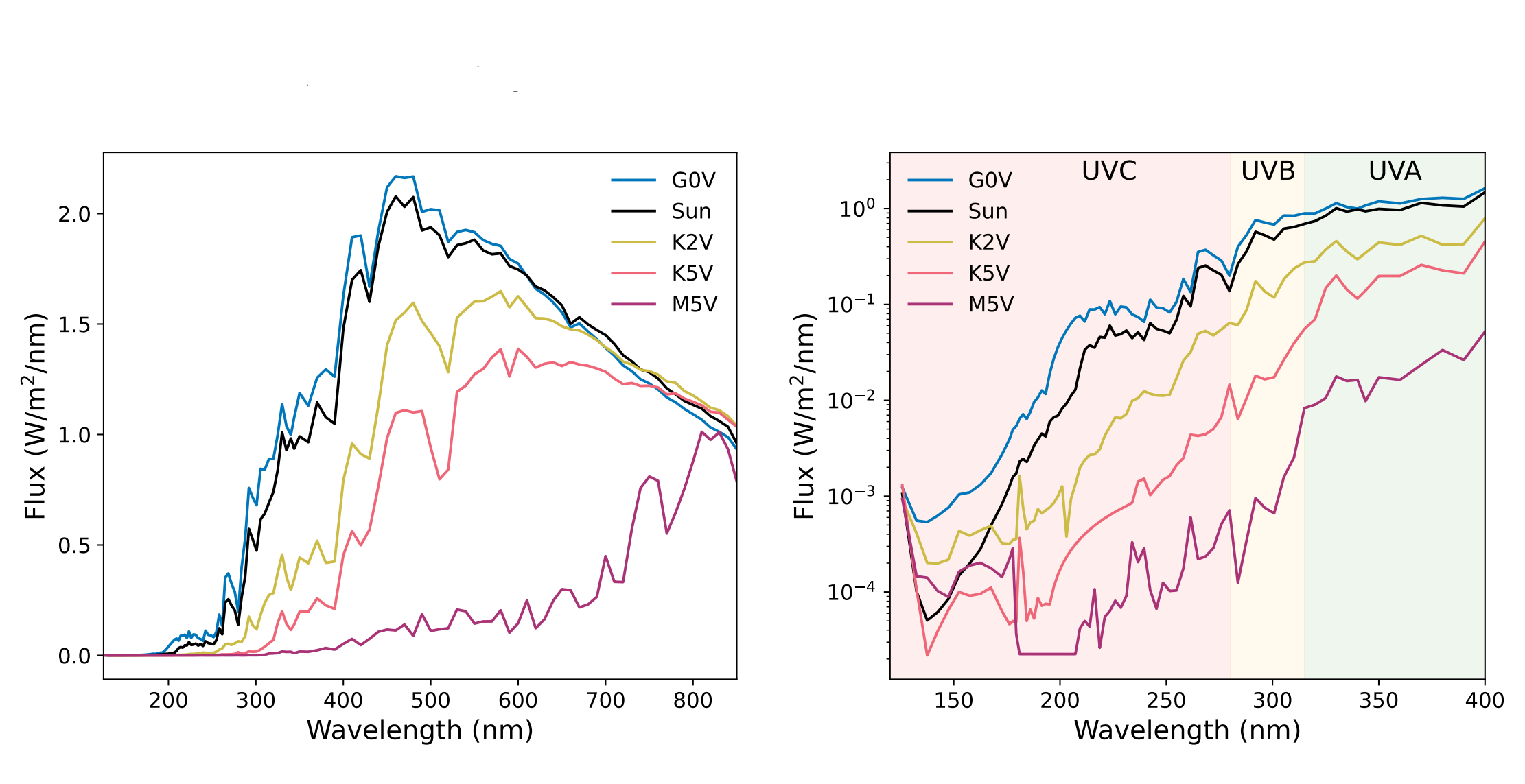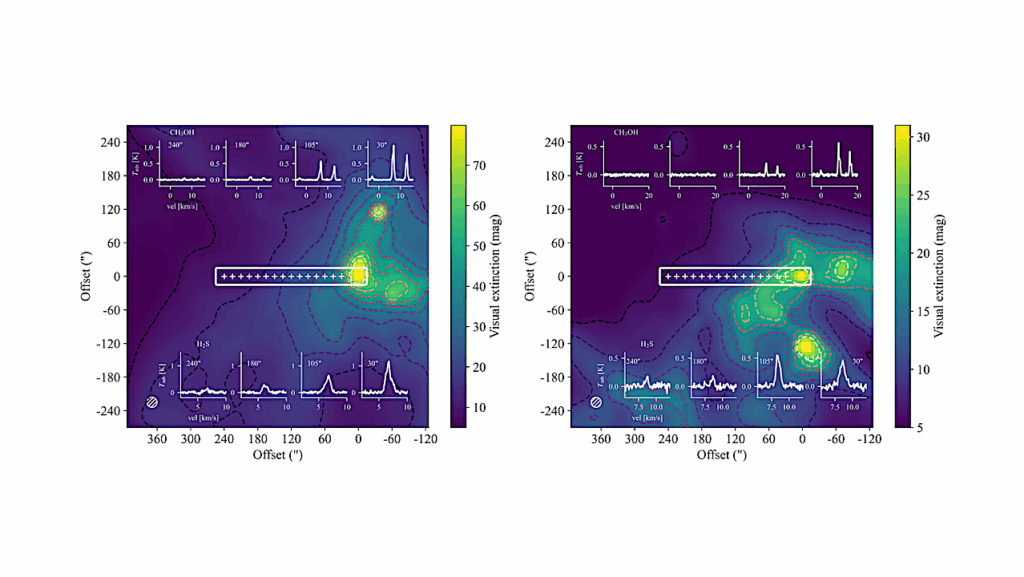Is Ozone A Reliable Proxy For Molecular Oxygen? I. The O2-O3 Relationship For Earth-like Atmospheres

Molecular oxygen (O2) paired with a reducing gas is regarded as a promising biosignature pair for the atmospheric characterization of terrestrial exoplanets. In circumstances when O2 may not be detectable in a planetary atmosphere (e.g., at mid-IR wavelengths) it has been suggested that ozone (O3), the photochemical product of O2, could be used as a proxy to infer the presence of O2. However, O3 production has a nonlinear dependence on O2 and is strongly influenced by the UV spectrum of the host star.
To evaluate the reliability of O3 as a proxy for O2, we used Atmos, a 1D coupled climate/photochemistry code, to study the O2-O3 relationship for “Earth-like” habitable zone planets around a variety of stellar hosts (G0V-M5V) and O2 abundances. Overall, we found that the O2-O3 relationship differed significantly with stellar hosts and resulted in different trends for hotter stars (G0V-K2V) vs cooler stars (K5V-M5V).
Planets orbiting hotter host stars counter-intuitively experience an increase in O3 when O2 levels are initially decreased from 100% Earth’s present atmospheric level (PAL), with a maximum O3 abundance occurring at 25-55% PAL O2. As O2 abundance initially decreases, larger amounts of UV photons capable of O2 photolysis reach the lower (denser) regions of the atmosphere where O3 production is more efficient, resulting in these increased O3 levels.
This effect does not occur for cooler host stars (K5V-M5V), as the weaker incident UV flux does not allow O3 formation to occur at dense enough regions of the atmosphere where the faster O3 production can outweigh a smaller source of O2 from which to create O3. Overall it will be extremely difficult (or impossible) to infer precise O2 levels from an O3 measurement, however, with information about the UV spectrum of the host star and context clues, O3 will provide valuable information about potential surface habitability of an exoplanet.
Thea Kozakis, João M. Mendonça, Lars A. Buchhave
Comments: 19 pages, 7 figures, 4 tables; in press with A & A
Subjects: Earth and Planetary Astrophysics (astro-ph.EP)
Cite as: arXiv:2208.09415 [astro-ph.EP] (or arXiv:2208.09415v1 [astro-ph.EP] for this version)
https://doi.org/10.48550/arXiv.2208.09415
Focus to learn more
Related DOI:
https://doi.org/10.1051/0004-6361/202244164
Focus to learn more
Submission history
From: Thea Kozakis
[v1] Fri, 19 Aug 2022 16:00:35 UTC (794 KB)
Full paper https://arxiv.org/abs/2208.09415
Astrobiology, Astrochemistry,








